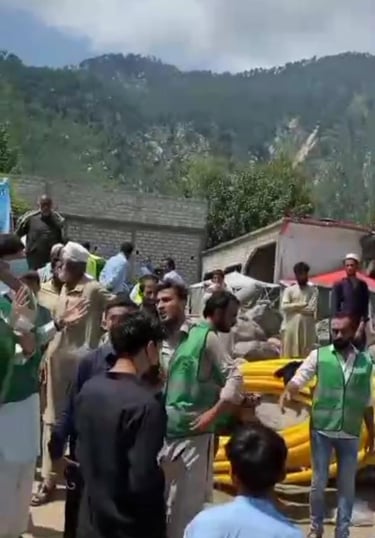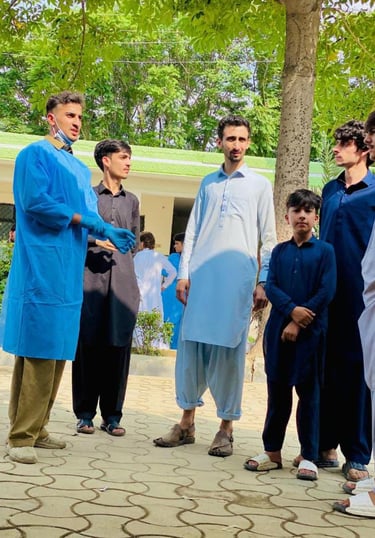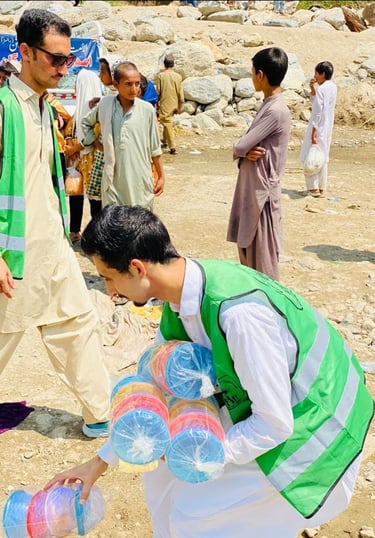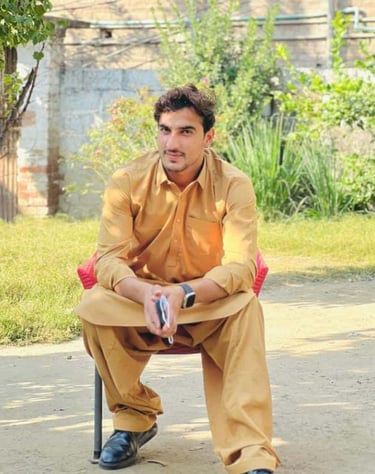Implications of the floods in Swat
In a single week, more than 42,000 people were displaced, over 3,500 homes were damaged, and nearly 120 kilometres of roads were washed away.
Sheryar Khan
11/13/20253 min read


The recent floods in Swat were a strong reminder that the valley is becoming more vulnerable every year. What happened was not only because of heavy rain. It was the result of climate change, damaged forests, weak planning, and fast population growth in the area. When the rains came in July and August, the Swat River overflowed, roads collapsed, houses were washed away, and entire communities were cut off from help.
The floods were different from previous years because of rapid glacial melt and sudden cloudbursts. These made the water levels rise very quickly, giving people very little time to escape. Many villages near the river—such as Bahrain, Matta, Charbagh, and parts of Mingora—were hit the hardest. Residents said the floods came like a fast wave rather than a slow rise of water.
One major reason for the destruction was the way Swat has changed in recent years. As tourism and population increased, more hotels, shops, and houses were built close to the river. Forests on the mountains were cut for timber and fuel, and hillsides were cleared for construction. Without trees, rainwater rushed down the slopes with great force, turning into flash floods. Because of this, the valley was not able to handle the heavy rainfall of 2025.
The government did issue warnings, but many people did not receive them in time or did not understand the technical language used. Some areas were so damaged that rescue teams could not reach them quickly. Roads, especially the Bahrain–Kalam road, were destroyed, slowing down relief work. In many places, community volunteers became the main rescuers.
The floods also caused serious economic problems. Tourism, which supports thousands of families in Swat, came to a halt. Many hotels, bridges, and tourist spots were damaged. Small businesses lost their income, and farmers lost their standing crops and fruit orchards along the river. Women were affected even more than men, as they had to care for families, manage food shortages, and struggle to access relief in male-dominated settings.
To reduce the damage from future floods, Swat needs long-term, practical policies. The first step is to restore the environment. Large-scale reforestation with local trees is essential to control soil erosion and slow down floodwater. Illegal logging must be strictly controlled, and communities should be involved in protecting forests. Alternate energy sources should be provided so people do not rely on cutting trees for fuel.
Next, construction laws need to be enforced. No new buildings should be allowed in floodplains, and risky structures should gradually be moved away from the river. Tourism must shift toward more eco-friendly models, such as small wooden cabins, proper drainage systems, and buildings that do not block natural water flow.
Infrastructure also needs to be upgraded. Bridges must be rebuilt higher and stronger. Riverbanks should be reinforced not only with cement walls but also with plants and natural barriers. Roads in upper Swat must include protections against landslides and better drainage.
Disaster management should focus on early action, not just emergency response. Warning systems must be simple, accessible, and available in local languages. Community-level volunteer groups should be trained and equipped. The PDMA should conduct regular drills and improve coordination with local authorities.
Social protection is equally important. The government should develop low-cost insurance schemes for flood-prone families. Cash-for-work programmes can help local people earn money while they rebuild damaged infrastructure. Relief systems must consider women’s needs, such as safe distribution points, separate facilities, and mobile healthcare units.
The key lesson from the 2025 floods is that Swat must adapt quickly. Climate change will bring more extreme weather, but the damage can be reduced if planning is improved. Swat now faces a choice: continue reacting after every disaster or adopt a long-term, climate-resilient approach that protects nature, strengthens infrastructure, and places communities at the centre of decision-making. If these steps are taken seriously, the valley can become safer and more sustainable for future generations.
In a single week, more than 42,000 people were displaced, over 3,500 homes were damaged, and nearly 120 kilometres of roads were washed away.




Volunteers doing community service through public out reach, distribution and field visits in the local communities.


Sheheryar Khan serves as the YEW local coordinator from Pirbaba Buner. His hobbies include travelling, volunteering and making new friends.
